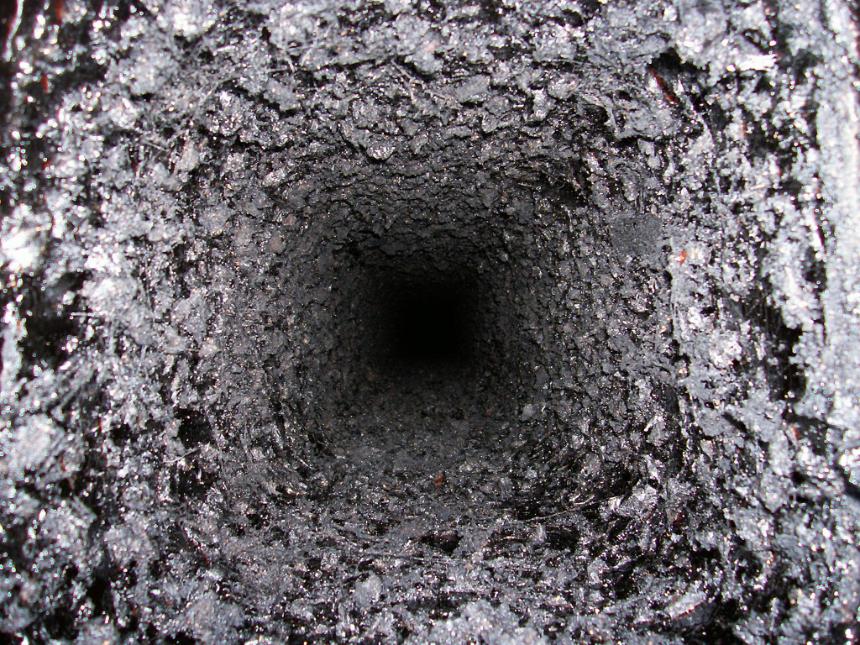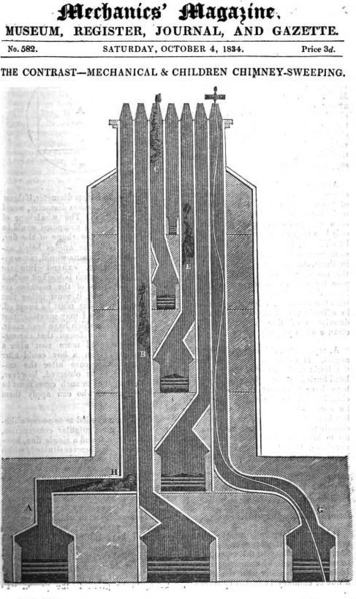We issue a certificate with every single sweep, this is a must for your insurance company. If something was to happen to your chimney, the first question they would ask would be 'when did you last have it swept' the second would be prove it...!'
Please give us a call or drop us an email and we can get you booked in. We offer multi sweep discounts and a neighbourhood discount. Once in our system you will never have to worry about your fire again, we will call you to book it in sweep after sweep keeping you and yours safe.
- Chimneys need to be swept for many reasons....The obvious is to clear out the deposits
and bi-products of the combustion process in your fireplace / stove.
Coal
fires generate a lot of fluffy soot, this can bung
up a chimney very quickly. When you bring it all down into a fireplace you
cannot believe a) how much is up there and b) how it stayed up there defying
gravity.Wood fires will not generate as much soot as coal but it does create a lot of tar and creosote. Both of these substances are bad for your chimney or flue. Both are flammable and both are corrosive. If you have a stainless steel flexi liner or a solid twin wall you will remember how much it cost you, you do not want it rotting out from the inside out.
You know you have a problem when you get a bubbly looking crispy substance falling down the flue and into the stove. This is burnt or boiled creosote (burnt will be a lot lighter in weight), you have either had a small fire in the flue or narrowly missed one. Most flue manufacturers will say their warranty is null and void if this appears as you haven't taken responsibility and looked after your flue. They say that once you have a fire a chimney should be re-lined, whether it is a masonry chimney, a stainless steel liner flex or solid, even pot liners and pumice systems. The heat involved can crack or damage any of these and their integrity cannot be trusted. Imagine the cost of this. All avoidable by getting your chimney or flue swept at least once a year.
2. Checking for blockages and nests. Even if you do not use the fire from one year to the next, if you are thinking of lighting it you should have the chimney swept to check that it is not blocked and to inspect the condition of it. Even chimneys in use make ideal nest sites for birds, mainly jackdaws to make their nests in the spring. You light that fire come Autumn and you have a chimney fire on your hands not just burning with the tinder dry twigs in the nest but also the tar etc on the sides of the chimney wall, this combined with the oxygen a chimney fire sucks from the house through the fireplace creates a furnace and it will burn like a jet engine reaching mind blowing temperatures that can crack the very structure of your chimney and house but also ignite your’s or you neighbour’s roof. A chimney's performance can even become impaired by spiders webs. If the cross sectional area of a flue is compromised in just one small place it can completely throw out the equation that makes that chimney work and draw. This especially applies to gas flues and chimneys. spiders will quite happily live in these keeping warm. Their webs gather dust and become silk sheets. Will block a chimney easily and won't let your gas real flame fire vent up the chimney allowing all CO fumes to spill into the room.
It is important to realize that you do not need a birds nest to start a chimney fire, embers up the chimney are enough to light up the flammable deposits. Check you local fire service website for statistics, you will be amazed.
A foreign object in a chimney does not need to completely block the chimney for it to cause a chimney to not draw. Evn spiders webs with a layer of dust on them can completely throw out a flue.
Something we encounter a lot is fallen feathers, feathers are the dividing walls between 2 flues in one chimney stack. Again a brick or two you would have thought would let smoke by no problems but no, a flues dimensions are part of an equation, if some of the space is compromised the fire will not work. This also affects gas fires going undetected as the emissions are odourless.
How often should I have my chimney swept...?
The Solid fuel association recommend quarterly when in use. This means twice in a season.
We carry kit for every eventuality, we have rotary kit for cleaning out flues ie flexi liners and we have traditional rods and brushes in all sizes for all manner of chimneys from the biggest of inglenooks down to little 9” square flues. We have soft brushes, medium and aggressive brushes, flails and scrapers et.c all of which are hand made and built to last, nothing like you would buy at your local hardware store.
We have an industrial vacuum cleaner with the finest heap filters money can buy. These are so fine the machine has to have 2 motors to be able to drag clean air through to create the suction. If you were to just use a henry say, soot is so fine, an element of it would get blown straight through the machine and back into the room which is obviously a health hazard and also in a day or two, when it settles, everything would be black.
Room protection is a particular skill we are very good at. We look after quite a few manor houses and other such prestigious properties in Bath and Wiltshire, where the owners (or my insurers) would not be very pleased with soot all over their antiques or cream carpets etc. Right from when we come in through your door, it is shoes off and sheets down until we leave, no matter what your floor type. Cream carpets or stained boards, we aim to leave how we found it. Everything that comes down the chimney gets contained within the fireplace or the stove, until safely vacuumed away.
We also carry CCTV gear to inspect chimneys top to bottom, to check they have been cleared properly and to check for any damage or cracks etc.

This flue is bad, it is covered in boiled creosote, it could go up at any time. A good sweep will get all of this down and away making sure the fire and the house etc are safe. Though it is a big ask, chimneys should not be allowed to get to this condition.
You can see where the tar / creosote has boiled and then the thin skin of the boiling bubbles has been singed. So close to a roaring chimney fire. This would have sucked all the air from the house and gone like a jet engine, getting hotter and hotter and pulling more and more air until it ran out of fuel, the tar, or was put out by the fire brigade.
The trouble the fire brigade have is that they have to try to ascertain weather it is a birds nest fire or a tar fire. There would be a 50 50 choice in the autumn time, i.e. first light up of the season or if in mid season, will almost defiantly be tar. If tar, they are fighting something akin a chip pan fire, in as much as the water will displace the burning oil making it roar etc etc. People are always amazed how little water they use. People generally expect the ground floor to be up to the windows in water. Obviously all crews do things differently but some of the fire men I have spoken to use an old fashioned stirrup pump.
Water damage aside. It is the rapid heating and to such a temperature that ruins a chimney, what ever its construction, what ever its lining, it should never be taken as 100% again. There will be a flaw or crack in it somewhere if not multiple. Twin wound flexi stainless steel liners will just pop apart like a big coil of ribbon.
Although you may think a chimney fire is kind of contained, it can spread to roofs and timber work (such as ceiling joists) and neighbours roofs and timber work…
What we see a lot of is where a flexi has not been installed correctly and is up side down. This means that water cannot run back to the stove where it is safely boiled again but gets caught in the construction of the flue. It hangs and gathers all the fl;amble particulates passing it and soon becomes tar. This happens also when a flue has not been insulated. Even the best wood supplied will still be around 10 % moisture content. This literally means that 10% of that log is water. Imagine poorly seasoned wood at 30%..!!1 You are just pouring water into your stove. This water boils and the steam makes up a considerable part of what you think is the smoke coming out of the chimney. (A good hot well established fire should show next to nothing but heat haze from the cowl) As the flue climbs higher the smoke cools and eventually the steam will condensate and turn back to water. As the water falls back it boils again and again until it starts to gather all the flammable deposits from the smoke passing it unitl the flammable content out ways the water and up it goes.
If your chimney is not insulated and should be, get it done or sweep it every month. Ask us about checking if your liner is insulated or needs to be.
Avoid chimney fires at all costs.

The picture above shows how the fire places in a big town house all meet up at the stack on the roof. (note; we do not use boys)
TCB Stoves and Sweep
16 Hitchings Skilling
Colerne
Chippenham
Wiltshire
Sn14 8ED
01225 743435 / 07510184432